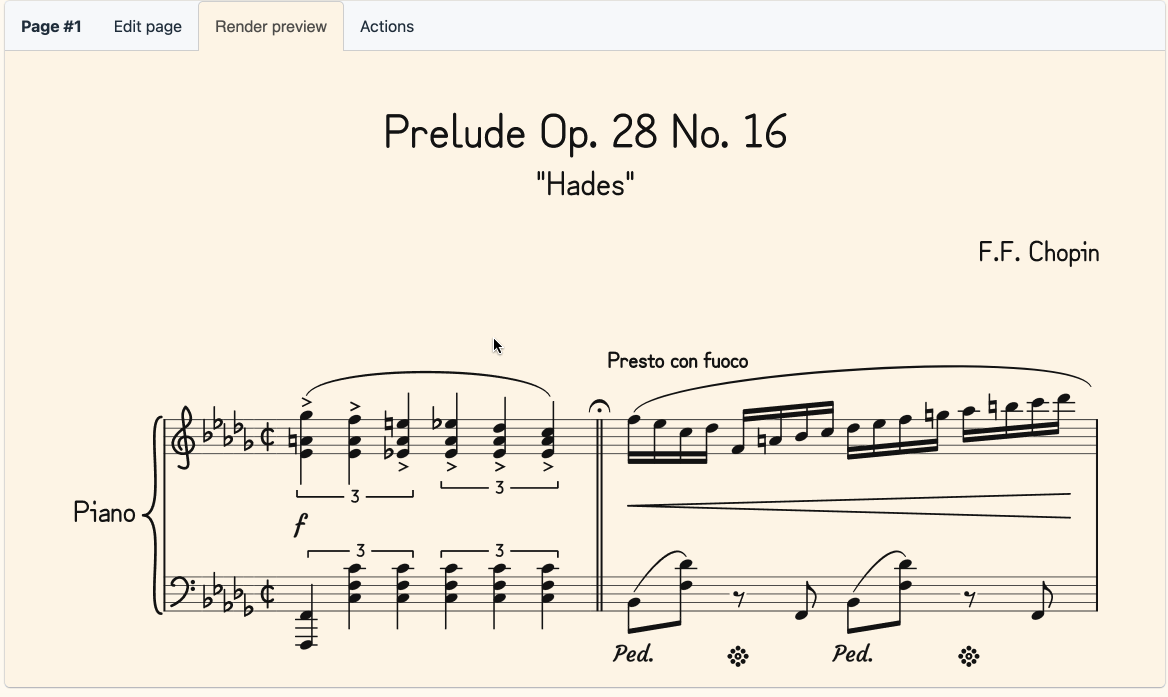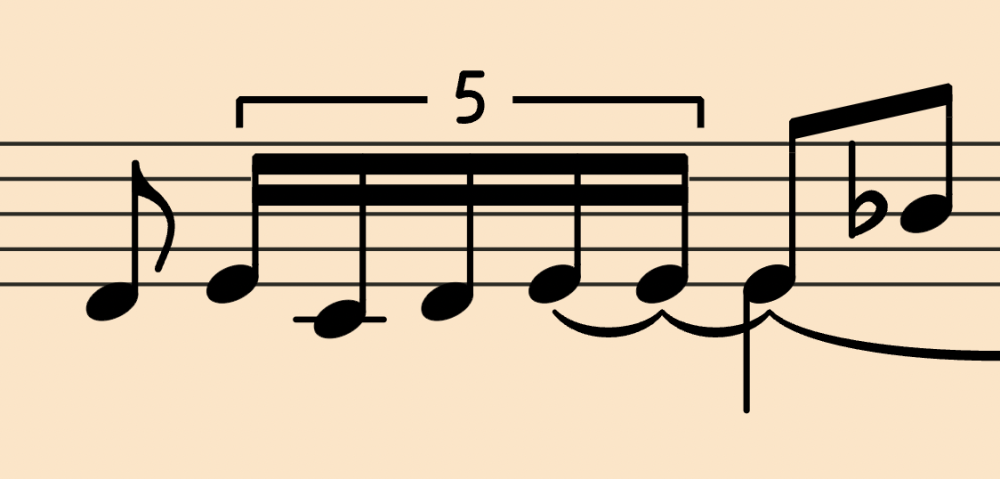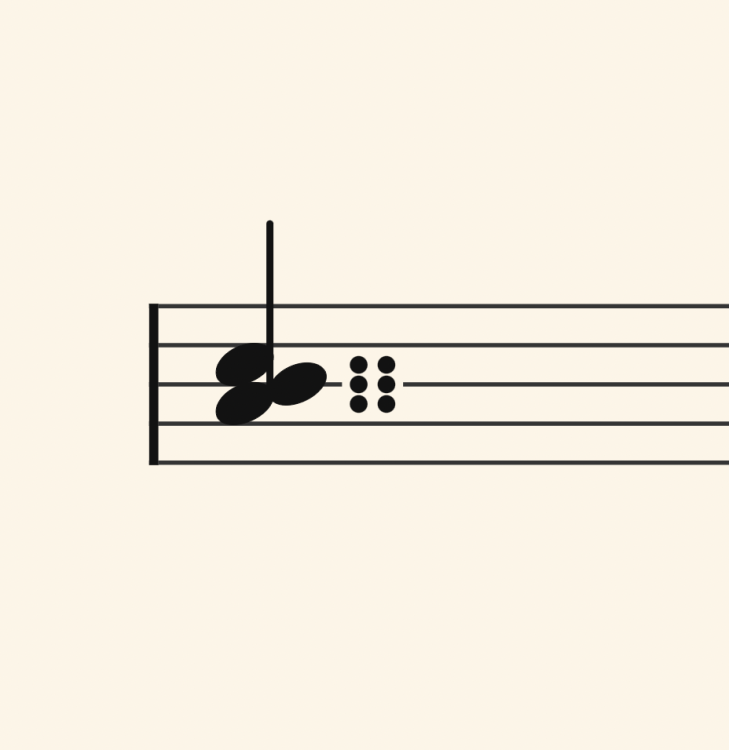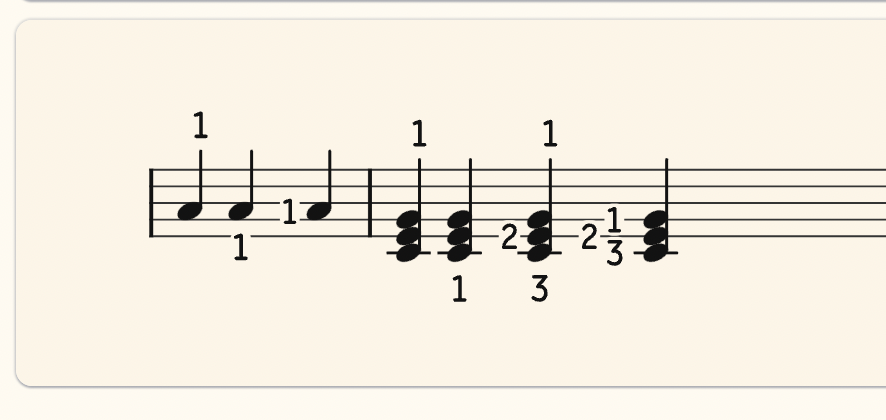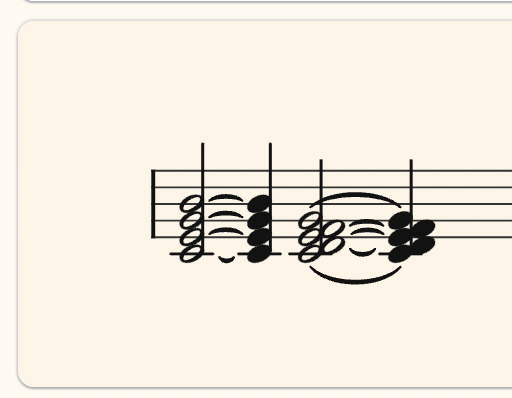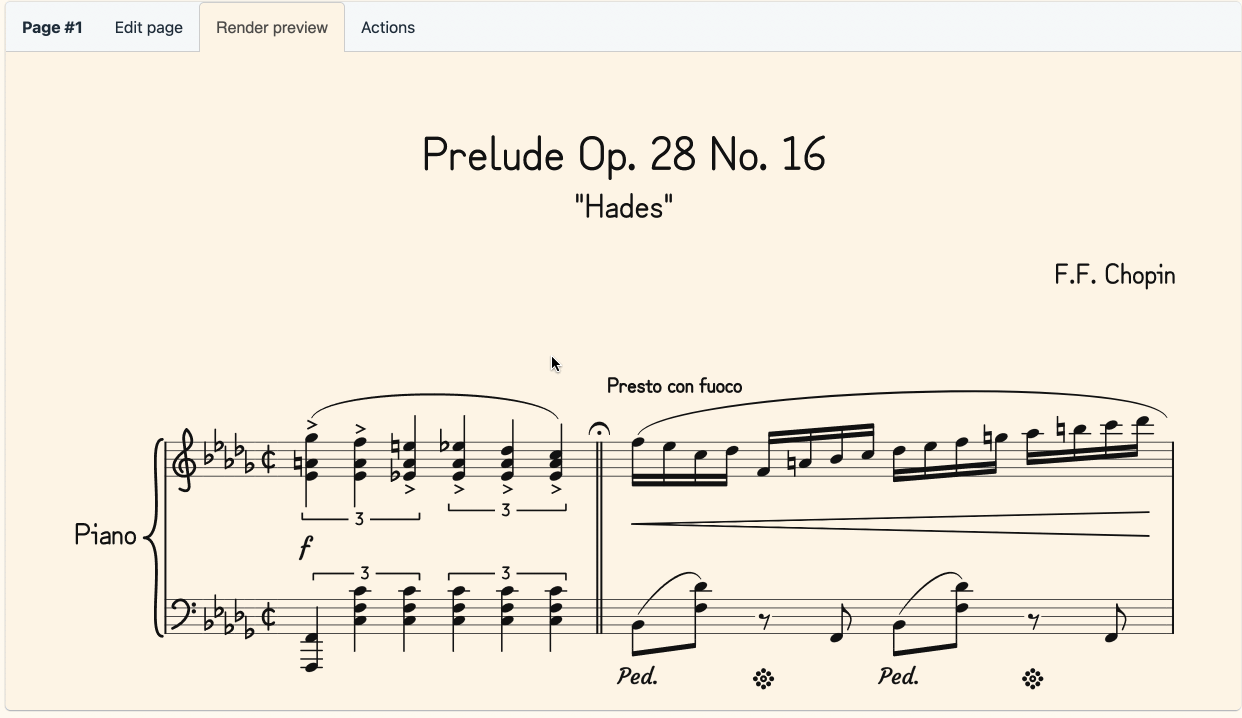
guseyn
Members-
Posts
12 -
Joined
-
Last visited
About guseyn

Profile Information
-
Gender
Male
Recent Profile Visitors
The recent visitors block is disabled and is not being shown to other users.
guseyn's Achievements
-
Unison: Draw Music With Words
guseyn replied to guseyn's topic in Advertisements and Member Announcements
It's a pleasure for me to continue dialog with you, so let me clarify more things: 1. The language in Unison is very straightforward(intentionally), yes you need to remember certain rules in order to type your music really fast. But you are getting so much in return: you are learning about the structure of any music score: note/chord/unit->voice->stave->measure->page line. The flexibility is ridiculous, you want 10 voices - you can do it. You want crazy cross-measure tuplets, cross-measure beaming groups or cross-stave s-shaped slurs in any form - you get it. Imagine you have a pen and paper, you can draw anything you want, literally. This is what Unison offers. It's not like you need 10 voices, or any other crazy staff, but if you want to - you just can do it. Because who am I, as a creator of a tool to tell you what you as a musician can or cannot do. Music is art, and there are no restrictions of how you can express yourself. But it does not mean that Music don't obey certain rules, sure it does. But having such flexibility is a bless. Building such flexibility in W1 is a nightmare, but this is what probably holding back music development. If software restricts you in some way, then the whole progress of music slows down. You need to learn your software anyways, and sometimes those W1 apps have really big difference in how you approach certain tasks. Because UX are completely different in any given W1 app. But people learn new things if they want a change. Language that I developed for Unison is extremely plain. You said that you don't mind brackets. And that's the problem, because I can use brackets for let say tuplets, other language creators can use them for beaming groups and etc. In that little moments you need to learn again and again for new languages, which I try to avoid at all costs. And if you see words like "measure, staff, voice" - there is no way that you would not understand that. Or commands like: "slur on first stave from first unit to third unit". It's just super straight forward. You can read such text and can replicate music score on a paper if you want to. Is it verbose - sure, but there is no way that you as a musician cannot understand it. For me this is the most important factor. 2. About the first example: I tested in many cases this solution, and I would say that in 100% (or close to it) it's a perfect solution. 3. I would also mention why Unison is cooler than LilyPond - navigation system between text and image. I remember back in university when I was typing my diplomas in LaTeX: it's super annoying when I was trying to find certain place in the text to adjust or improve. In Unison it's super easy by ctrl+left click on text/image: This is a key feature for the people who is afraid of loosing control over the text they are typing. It also teaches you about the structure of the music. 4. Another feature you mentioned is playback. I will try to build the best sounding for the music score. Although the main idea of Unison is just to render music score, I will still consider this feature as a quite important one. When you are using any app for playback, you just hear this annoying robotic sound, sure it's okay, better than nothing I guess. But is this the best that we can do? Well, I will try to be more ambitious. Just by what I've done so far and how much details I worked on, and how many endless hours I spent on something that few people in the world would appreciate or even notice. I've worked on this tool for three years so far. Almost everyday! I am a normal human being who needs make a living, I have a job, bills, duties, etc. But still I managed to create something that I am really proud of. Not only I am quite unique person in terms of different skills and knowledge which are required to build such app: music, math(yes, tons of it), programming skills (in building UIs, servers, parsers of natural languages, databases, deployments), but also I am an extremely dedicated person. I don't play around. It's not some bull crap I do "for fun". I don't want to sound pretension, although I am a pretension dude. Well, I feel like I deserve it to behave in this way. The reason why I am saying all this is quite simple - just to let everybody know, that I will continue working on this tool and make it as good as I can. And I feel I can do it better than many other people/companies. The only skill I am lacking is selling skills and growing community through learning and content creating. But I am just 28, I guess I got time to learn how to do it. And it always requires time and cannot be done overnight. I always appreciate constructive criticism, this is why I want to thank you once again. -
Unison: Draw Music With Words
guseyn replied to guseyn's topic in Advertisements and Member Announcements
@chopinyou're absolutely right. Selling skills is something I really need. And I believe that growing community is crucial factor. -
Unison: Draw Music With Words
guseyn replied to guseyn's topic in Advertisements and Member Announcements
Wow, thanks for the feedback and compliments to my software. I will try to cover as many things as I can: 1. It's a domain specific language. If you compare syntax in Unison and LilyPond, you will notice that in Unison I tried to avoid all cryptic characters, symbols and terms that potentially can be misunderstood. All the keys words in Unison are accepted musical terms. The idea was that if you get the text written in Unison DSL, then just by looking at it, you can easily reproduce the music score with pen and paper (or digitally). 2. So, there are indeed two types of music score editors: WYSIWYG(What You See is What You Get) and WYSIWYM(What You See is What You Mean). If you prefer first type, it's okay. In ideal world they should work perfectly, but let's be honest - most (maybe even all) of them have problems with UX. It's not like end of the world, but sometimes it's just super annoying. Maybe you know such YouTube channel, where author describes such problems in many such softwares. We can argue all day long, but I can just say from my experience it's much easier to use WYSIWYM type of editors, and more importantly it's much easier to develop them. Mostly because you don't need to worry about how to make everything as consistent as possible (for spacing between different elements, etc.) Of course you need to learn commands, but it's not that difficult, and in a long term you can create scores even faster than using mouse. And it's not only about speed and efficiency. For me, when I type the structure of my music gives me so much more pleasure, because it gives me feeling that I am writing music. 4. More precisely than any software to be honest. I can give you some examples that I've never seen: Here you can see that stave lines don't intersect sixteenth beams, which allows to increase readability. Or here, we optimize vertical spacing of dots for chords with whole tones. Stave lines don't intersect text labels, which improves readability In any other software, such ties for chords with whole tones would look ugly, but here we connect such chords quite nicely And there are many such examples. 5. By "Using human language is the best way to do it", I meant that if we are going to use text to engrave music, then it's better to use plain language and avoid special characters. 6. "knowing English which is NOT an universal language; being optimistic, roughly 1/4 of the world population speaks it." I am aware that there are many other popular languages. But first of all, I am not trying to reach billions of users, for me it's important to create high quality product which is profitable enough to motivate me. This is my ambition. And second of all, I can adapt Unison for other languages as well, but it requires a lot of time as you can imagine. I understand that music score as itself is a language, but it does not mean that we cannot use the language that we speak and write to digitalize it. We don't have music symbols on the keyboard, maybe someone in the future will invent it, but now we are limited in that sense. 7. I am planning to add MusicXML export/import, it of course will increase number of scores in Unison, and will increase speed of creating scores. Collaborations for teams of musicians is an interesting idea, that can be implemented in the future. In general, I would say that Unison is more finished product than you may think, just check it out 🙂 -
Unison: Draw Music With Words
guseyn replied to guseyn's topic in Advertisements and Member Announcements
@chopin Still not sure, what you mean by this: "Make sure you don't "alternate" the notes when writing in your tuplet". I use two voices just to demonstrate that spacing and syncing of notes works perfectly well. I have some troubles to use web version of MJ on my laptop (I am using just touchpad). I guess we can discuss it in DMs along with other things. -
Unison: Draw Music With Words
guseyn replied to guseyn's topic in Advertisements and Member Announcements
I am really impressed with your playback feature in Music Jotter and how natural it sounds. This is something I want to achieve with Unison. Did you develop your own tool (library) for that? The music font that I created for Unison is generated by the code, so technically it's not a font (you cannot use it as otf format). It heavily relies on the strokes (feature of any svg element), so that I can use fewer points to achieve "handwritten" feeling. Also it's easier to develop in this way. And as you may know, it's almost impossible to convert such elements to font format (you need to get rid of strokes). Maybe I will come up with some solutions in the future. But I've tried multiple times and failed to do that. But I will definitely implement export/import to MusicXML, so that I can have common format with any other popular app. Another thing I want to mention is that like Music Jotter, Unison can do crazy things with tuplets as well(and not only them). You can use any tuplet (and I mean with any number) and with as many layers you want, like in the example I attached. About the ballad. I found it here https://musescore.com/classicman/scores/174214 (let me know if this is the the ballad you meant). And I want to say, that I can achieve that (no doubts) and the output will look more appealing(and I am not talking about the font). It's a huge piece of music, so it will definitely require some time from me to write it down. Right now I am super busy. But I can write some measures from it, that maybe you're interested/curious the most. We can discuss collaboration, and how we can help each other not only for developing software, but also maybe creating a podcast and tell our stories and grow the community. -
Unison: Draw Music With Words
guseyn replied to guseyn's topic in Advertisements and Member Announcements
Thanks for the constructive criticism. Yeah, the slur looks little sus. But to be honest, this is something I saw in the original piece, and also was a bit confused, and it was engraved there even worse, so maybe I will come up with some workaround. I am not sure, what you mean by the extended barline (this is how it was in the original piece) But anyways, thanks. -
Unison: Draw Music With Words
guseyn replied to guseyn's topic in Advertisements and Member Announcements
@chopin By the way I finished the first example: -
Unison: Draw Music With Words
guseyn replied to guseyn's topic in Advertisements and Member Announcements
@chopin Thank you for the feedback and the support. Such messages really motivate me work even harder on the project. I invest a lot of time to reach perfect spacing between notes/units (it's relies golden ratio rule), and of course I try to avoid any potential collisions in the score. No doubts that new music fonts will be released in the near future. Right now I am working on a framework that manages different fonts, so hopefully everything will be smooth. -
Unison: Draw Music With Words
guseyn replied to guseyn's topic in Advertisements and Member Announcements
It's not a coding language. It does not have brackets, braces or any other special characters. All the command are quite intuitive, so you don't need to learn anything fancy. All the music terms that used in the "natural" language can be understood by any musician. People use LaTeX over Word because they want consistency in their documents. People learn LaTeX, which is far more difficult to understand that the language I developed. I really don't hear constructive criticism, only the "examples do not look good". I suspect, you didn't like the font. It's okay, I don't expect everyone to love it. I like it, and many other people as well. Moreover, I am going to add more fonts for Unison. So, it can be a true masterpiece where you can define any music structure you want in readable format. -
Unison: Draw Music With Words
guseyn replied to guseyn's topic in Advertisements and Member Announcements
I completely disagree that the results are worse. Elements are positioned more precisely, new music sans rounded font matches with the text font. Insane amount of little details, that are not even considered in other apps. -
Unison: Draw Music With Words
guseyn replied to guseyn's topic in Advertisements and Member Announcements
Any application provides "extra steps". -
guseyn started following Unison: Draw Music With Words
-


